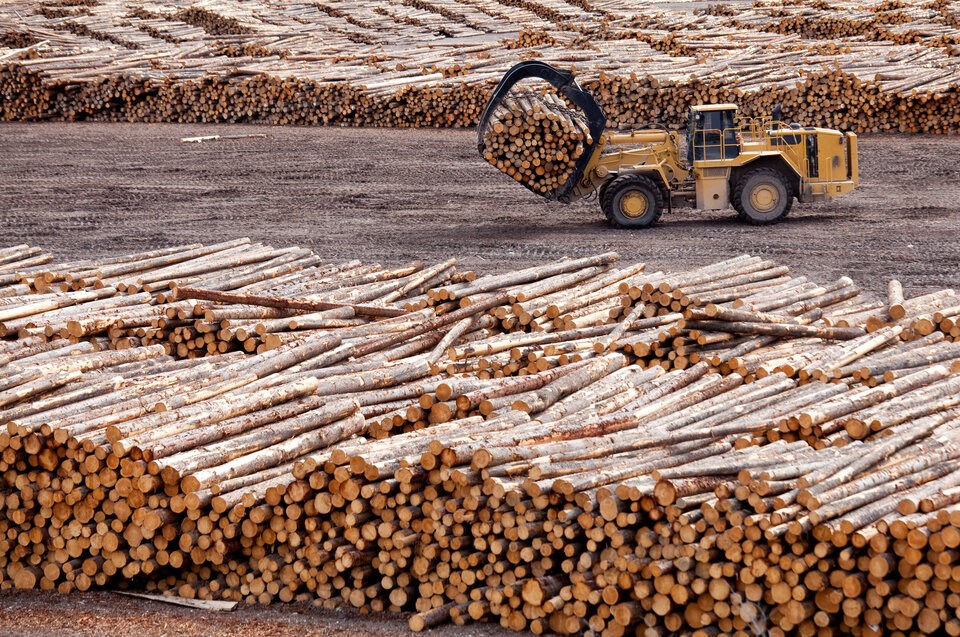A dwindling supply of wood fibre and the B.C. government’s move to create a “paradigm shift” in the forestry industry is leading to a “vicious cycle” that is scaring investment away from the province, warned private equity experts and industry leaders Thursday.
The comments, made at the BC Council of Forest Industries annual meeting in Vancouver, came following a year in which about 32 million cubic metres of wood was harvested — nearly half of what it was five years ago, said COFI’s president and CEO Linda Coady.
“There’s been too much change happening at the same time,” Coady said. “We need certainty.”
B.C.'s forestry sector has received an estimated $15.8 billion in investments over the past decade and currently backs about 100,000 direct and indirect jobs across the province, according to a COFI report released earlier this week.
Over the last four years, the B.C. government has moved to reorient the forestry industry so it prioritizes the health of forest ecosystems and long-term resilience of communities in line with recommendations from a 2020 Old Growth Strategic Review. The policy shift is meant to reignite a struggling industry while adapting forestry practices to an era of climate change, drought and the mega-fires that come with them.
Andrew Mercier, who was appointed as B.C. Minister of State for Sustainable Forestry Innovation about three months ago, said he has been relentlessly touring the province to understand what is ailing forestry.
He said he has stepped into burnt forests where companies are struggling to wade through red tape to salvage what wood is left and boost the province’s fibre supply.
“There’s a short-term crunch here,” he conceded.
Duelling narratives on why fibre is in short supply
While industry says bad policy pushed B.C.'s forest industry to suffer unnecessary losses, others have suggested the situation is of their own making.
Forestry experts, like Canadian Centre for Policy Alternatives's Ben Parfitt, have described signs of the “falldown effect” — in which B.C. forests have been exhausted by decades of over-harvesting to the point where trees have not had a chance grow back to maturity. The result: industry cannot sustain itself.
In line with the 2020 Old Growth Strategic Review, the B.C. government approved logging deferrals as a temporary pause to protect what's left of the provinces oldest forests while it came up with a longer-term solution.
Environmental groups, however, have criticized the government for failing to adequately protect old-growth trees under the deferral process. They say loopholes have allowed companies to log of tens of thousands of trees a year while subverting Indigenous consent.
In one case last year, BC Timber Sales (BCTS) — the B.C. government-run corporation responsible for auctioning off 20 per cent of the province’s annual allowable cut — gave a green light to companies looking to log certain old-growth forests slated for deferral, documents show. The May 2023 memo gave direction for logging to proceed in certain old-growth forests where First Nations haven't responded or where road building elsewhere is deemed not economically feasible.
“That scares me,” said Spô’zêm First Nation Chief James Hobart after reviewing the memo last spring. “Our expectation is that they were not going to log as the talks were going on.”
The Sierra Club BC calculated that in 2023, 45,700 hectares of old forest were logged, more than 19 per cent higher than originally claimed by the Ministry of Forests, when it said logging rates had hit “record lows.”
And last month, a map leaked to the Canadian Centre for Policy Alternatives suggested B.C. had approved a pause in logging in less than half of the old-growth forests identified as being at risk of permanent biodiversity loss.
'You can make money'
On Thursday, forest industry leaders presented a different narrative — one where government red tape, poor investment conditions and multiple years of devastating wildfires have eliminated thousands of jobs and crippled once thriving economic growth.
Coady, who has worked for a number of large forestry companies in the past, questioned Minister of Forests Bruce Ralston over the inability of BC Timber Sales to meet its annual allowable cut in recent years.
“It’s just a model that is not working anymore,” she said.
Ralston responded saying BCTS had faced challenges but that he expected wood sales to increase the next fiscal year. He said he was “optimistic about the future.”
“You’ve heard it from the minister,” Coady told the room. “It’s bottomed out. Nowhere to go but up.”
Others at the conference cautioned B.C.'s industry would continue to struggle until private equity investors felt good about putting money into the province’s forestry sector.
Daryl Swetlishoff, the head of research at the global financial services firm Raymond James, said B.C.’s forest industry was facing a “death by a thousand cuts” in recent years, with investment having moved away from the province and toward places like the U.S. south.
He said if fibre supply remains low and government keeps changing multiple forestry policies at once, saw mills will continue to close.
“Slow down the policy so that, you know, you can kind of understand what the rules of the road are today,” said Swetlishoff. “Then you can make money.”
Whatever the investment climate, change is coming to the forestry industry whether people wanted it or not, said Terry Teegee, regional chief of the British Columbia Assembly of First Nations and a member of Takla Nation.
Speaking before hundreds of people from industry and government, he pointed to ongoing amendments to the Land Act to give First Nations control of tenures and make decisions alongside government and industry.
“We’re not going back to the way it was, and that’s a good thing,” Teegee said. “This is coming.”
With files from the Canadian Press



